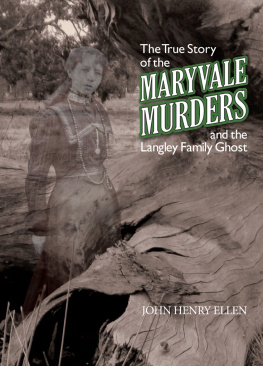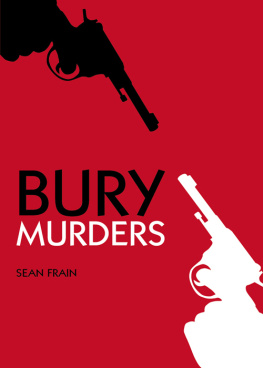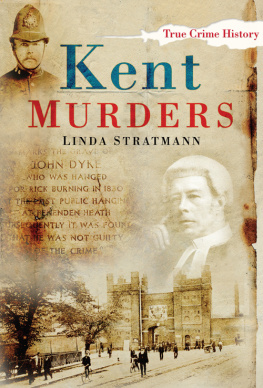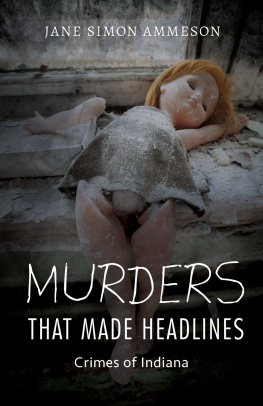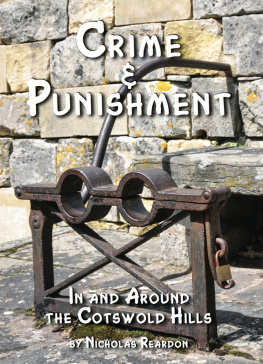Alibi Press
P O Box 72-832
Papakura
Auckland 2244
New Zealand
www.alibipress.co.nz
Copyright Terry Carson 2018
This book is copyright. Apart from any fair dealings for the purpose of private study,
research, criticism or review, as permitted under the Copyright Act , no part may be reproduced without the permission of the publisher.
ISBN 978-0-473-43245-4
Design and production DIY Publishing Ltd
Acknowledgements
M y thanks to historian Dr Michelle Smith and my daughter Linda Carson for suggestions, proofreading and encouragement. Also my wife Edna Carson for encouragement and forbearance. I also gratefully acknowledge the information and help received from Australian based historian Dr Elizabeth Rushden and genealogist Pam Sherlock, regarding the Australian life of Margaret Reardon. As always the staff at Archives New Zealand, Auckland and Wellington, were helpful and knowledgeable. Any mistakes found and all opinions expressed are the authors.
Foreword
T he 1847 murder of Lieutenant Robert Snow, his wife and youngest child remains one of New Zealands most sensational crimes. The Colony of New Zealand was only a few years old and its police and justice systems were in their infancy. Settlers finding their feet and making new lives for themselves in a strange and new land had an uneasy relationship with indigenous Maori. In these circumstances the solving of the crimes presented a real problem to the authorities. There was much rumour, speculation and suspicion. Although eventually the perpetrator was apprehended and received the full impact of the criminal law of the day a public hanging questions remained unanswered, and there was public unease about how matters had played out.
Comment and speculation continued for many years after the events of the late 1840s, until eventually fact and fiction became intertwined. This book is an attempt to separate the fact from the fiction or legends with particular reference to the actions of Margaret Reardon, the very involved former mistress of the murderer Joseph Burns. Her role in the murders was from far from clear at the time and, as the decades have passed, has frequently been inaccurately portrayed. I have tried to be as factual as possible in writing this book but where expressions of opinion have been necessary to comment on events, it is hopefully clear what constitutes the authors opinions, and what the accepted facts of the time were.
Contents
Preface
O n the 20 th October 1848, the 130 ton schooner Sisters docked at Hobart Town in Van Diemens Land, Australia. Her master Hugh Clark had been among the first to discover a new trading opportunity in providing a regular service for passengers and freight between the recently settled ports of the new Colony of New Zealand, and the larger and more established port of Hobart across the Tasman Sea. On this particular trip the Sisters was carrying twelve passengers all paid for by the Colonial Government of New Zealand. Eight of them were convicts, and the other four their armed police guard.
The convicts had all been found guilty of serious crimes and sentenced at the last sitting of the Auckland Supreme Court. Their sentences ranged from seven to fifteen years imprisonment to be served at the British penal colony of Van Diemens Land, as Tasmania was called in the nineteenth century. Five of the eight convicts were tough, hardened soldiers of the British 58 th Regiment of Foot, stationed in Auckland, who had relieved their boredom by committing violent house breakings. Among the three civilian convicts was one woman Margaret Reardon the only female to ever be sentenced to a term of transportation by a New Zealand Court. At the time the Sisters set sail from Auckland on the 22 nd September 1848, she was the Colonys most despised and reviled woman.
Margaret Reardon was sentenced to seven years transportation for the crime of perjury, namely, making an untrue sworn statement in a court of law. At her trial for perjury in the Supreme Court at Auckland, after a clear direction on the law from Chief Justice William Martin, the jury of twelve respectable middle-class men took only six minutes to find her guilty. The Chief Justice said, when sentencing her, that her offence was perjury in its worst form and a foul crime. A few days later Lieutenant Governor George Pitt also showed no mercy, and refused her passionate and heartfelt written petition to be allowed to remain in New Zealand in order to retain contact with her two small children.
In the eyes of the more respectable nineteenth century citizens of Auckland, Margaret Reardons worst crime was to have been for four years the common law wife of Joseph Burns, recently executed as a violent and brutal multiple murderer. She had committed perjury on his behalf to throw suspicion of murder onto two innocent men. She claimed that she acted out of fear and intimidation after having her throat cut by Burns and nearly dying; he claimed she was a willing party to the crimes and was his active accomplice in the murders.
Was Margaret Reardon an abused woman who was herself a victim, treated harshly by a male dominated legal system, or was she a voluntary participant in a dreadful and sensational crime? To attempt to answer this question we need to travel back to colonial New Zealand in the 1840s.
CHAPTER ONE
The Deed is Done
H e had no timepiece but it was about 1am, as far as he could tell, when he quietly slipped out of the whare.. He had the bayonet tucked in his trouser belt under his jacket and the tomahawk was held by his side, partly concealed by his arm and sleeve. The night was clear enough to be able to make out the rough track through the bracken and manuka scrub to the beach. He was pleased it was not a moonlit night. It was unlikely that on the sparsely populated North Shore anyone would see him go about his business, but he took no chances, keeping to the shadows and moving as quickly and quietly as he could, skirting around the Maori settlement until he reached the beach.
There were several boats to choose from and he pushed out a small dinghy lying at the waters edge and sculled the short distance to the other side of the inlet. He dragged the boat a few feet up onto the sand before disappearing into the scrub and bracken that almost came down to the waters edge. He headed towards the harbour shoreline and soon the scrub gave way to sand and he followed the beach for some distance. Across the river he could see the odd lamp showing from the houses on the town foreshore. He could also see the mast lights of HMS Dido anchored in the deep water. There would be someone on the quarterdeck officially on watch, but more than likely half asleep. He has stood his share of such watches during his own time in the navy. The part wooden, part raupo cottage of his quarry came into slight and, some distance beyond it, the square outline of the naval magazine and stores building could just be made out in the darkness.
There was no hesitation as the shadowy figure approached the door. Earlier in the day he had seen Lieutenant Snow, his wife and daughter come across to the North Shore on the punt. They had been dressed up for town and laden down with parcels of shopping. They had completely ignored him, even though they were almost neighbours. They probably thought acknowledging the presence of a half drunk former seaman was beneath them. Typical of the officer types, he thought. They had treated him like dirt when he was in the Royal Navy and nothing had changed since he had become a civilian.



